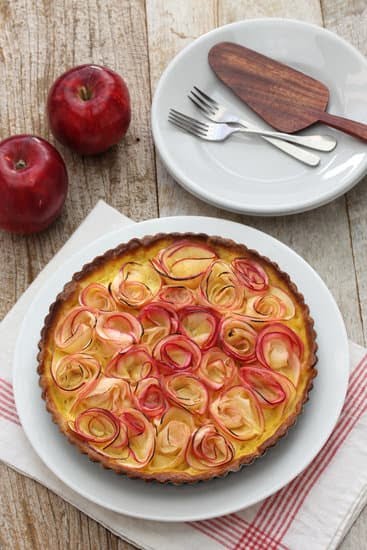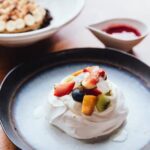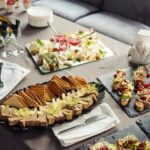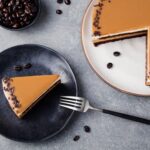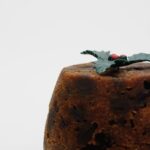Cake decorating designs are an essential aspect of creating visually stunning cakes that are sure to impress. From birthdays to weddings, the design of a cake plays a significant role in its overall appeal. Whether you’re a beginner or an experienced baker, understanding the importance of cake designs and learning the techniques to create beautiful decorations can elevate your baking skills to new heights.
The significance of cake designs lies in their ability to add a personal touch and make each cake unique. By incorporating special decorations, such as intricate piping or delicate sugar flowers, bakers can showcase their creativity and create cakes that not only taste delicious but also serve as works of art. Cake decorating designs allow bakers to express their individuality and style, making each cake a reflection of their vision.
When it comes to choosing the right cake for your design, considerations must be made regarding the type of cake, its flavors, fillings, and textures. Certain designs may require specific types of cakes to achieve the desired result. It is important to understand how different cake attributes interact with various decorations. For example, a dense chocolate ganache may work well with a heavy fondant design, while a light and airy sponge cake might be better suited for delicate buttercream piping.
In order to successfully create stunning decorations on cakes, it is crucial to have the appropriate tools and equipment on hand. This includes items such as piping bags, spatulas, stencils, molds, and more. Each tool serves a specific purpose in achieving intricate designs and adds depth and texture to the finished product. Understanding how these tools contribute to the creation process will greatly enhance your abilities as a decorator.
In this article, we will delve into all aspects of cake decorating designs – from selecting the right cake for your design to mastering essential techniques like buttercream and fondant application. We will explore various tools and equipment needed for successful decoration along with troubleshooting common issues that arise during the process. So read on to discover the secrets of creating stunning cake designs and learn how to showcase your creativity in every delicious bite.
Choosing the Right Cake for Your Design
Choosing the right cake for your design is an essential step in creating a visually stunning and delicious masterpiece. Different types of cakes offer varying textures and flavors, which can greatly impact the overall design and taste of the finished product. In this section, we will discuss the importance of selecting the right cake for your decorating design, as well as considerations for cake flavors, fillings, and textures.
Types of Cakes
There are numerous types of cakes to choose from when it comes to creating your design. Each type has its own unique characteristics that can enhance or complement certain designs. Here are some popular options:
- Butter Cake: A classic choice with a rich flavor and a dense yet moist texture. Butter cakes work well for intricate designs that require stability and durability.
- Sponge Cake: Light, airy, and delicate, sponge cakes are perfect for designs that require layers or stacking. They absorb flavors well and have a soft texture.
- Chocolate Cake: With its indulgent flavor, chocolate cake is ideal for bold and eye-catching designs. Its moistness also makes it suitable for sculpted cakes.
- Red Velvet Cake: The vibrant red color of red velvet cake adds a dramatic effect to any design. It has a slightly tangy flavor that pairs well with cream cheese frosting.
Considerations for Flavors, Fillings, and Textures
When choosing a cake for your design, it’s important to consider how the flavors, fillings, and textures will complement or enhance your overall vision.
- Flavor Pairing: Consider how different flavors will work together in your design. Complementary flavors like lemon with raspberry or vanilla with strawberry can create harmonious combinations.
- Filling Choices: Think about whether you want to add fillings between the cake layers that will add extra flavor or texture to your design. Popular choices include fruit preserves, chocolate ganache, or flavored buttercream.
- Texture for Design Elements: The texture of the cake can affect how certain design elements will adhere or appear on the surface. A smooth butter cake may be better suited for intricate piping work, while a sponge cake with a more porous texture may work well for absorbing syrups or fillings.
By carefully selecting the right type of cake and considering flavors, fillings, and textures, you can ensure that your chosen design will come to life in a visually stunning and delectable way.
Tools and Equipment Needed for Cake Decorating Designs
When it comes to creating stunning cake decorating designs, having the right tools and equipment is essential. These tools not only make the process easier and more efficient, but they also allow for greater precision and detail in the final design. Here are some of the essential tools and equipment you’ll need to have in your cake decorating arsenal.
Piping Tips and Bags
One of the most commonly used tools in cake decorating is a piping tip. Piping tips come in various shapes and sizes, allowing you to create different patterns and textures on your cakes. From simple borders to intricate floral designs, piping tips are a versatile tool that every cake decorator should have.
Additionally, piping bags are necessary for holding the icing or buttercream mixture that will be used with the tips. Disposable piping bags are convenient for quick clean-up, while reusable ones offer durability and can be easily washed.
Spatulas
Spatulas are another indispensable tool for cake decoration. Offset spatulas, in particular, are ideal for spreading buttercream or smoothing fondant on cakes. Their angled shape allows for better control and precision when applying frosting or smoothing surfaces. Straight spatulas can also be useful when working with larger cakes or covering large areas of fondant.
Turntable
A turntable is a rotating platform that allows you to easily access all sides of the cake without having to constantly reposition it. By placing your cake on a turntable, you can smoothly rotate it as you apply frosting or add decorative elements like piping designs or flowers. This ensures even application and helps achieve a professional finish.
Palette Knife
A palette knife is a versatile tool used for a variety of tasks such as spreading icing, lifting delicate decorations, creating texture on buttercream, or trimming excess fondant. Its flat surface and flexible blade enable precise control over your designs.
Fondant Tools
If you plan on working with fondant, there are specific tools that will come in handy. A fondant smoother is used to eliminate any wrinkles or air bubbles when applying fondant to the cake. Fondant cutters in various shapes can be used to create decorative accents such as flowers, leaves, or geometric patterns. A rolling pin with adjustable guides is also essential for achieving an even thickness when rolling out the fondant.
These are just a few of the many tools and equipment needed for cake decorating designs. As you explore the world of cake decoration, you may find additional tools that suit your personal style and techniques. Remember to invest in quality tools that are durable and designed specifically for cake decorating to ensure the best results in your creations.
Mastering the Basics
To create stunning cake designs, mastering the basics of working with buttercream and fondant is essential. Buttercream and fondant are popular choices for covering cakes and creating intricate designs due to their versatility and ability to create a smooth finish. In this section, we will provide a step-by-step guide on preparing these two types of icing and offer tips for achieving the perfect consistency and texture for easy application.
Buttercream icing is made by creaming together butter or shortening with powdered sugar, flavorings, and sometimes liquid for consistency. It can be flavored with various extracts, such as vanilla or almond, to add a delicious taste to the cake. One key tip for preparing smooth buttercream is to start with room temperature butter or shortening to ensure easy mixing.
It’s important to slowly add powdered sugar in small increments while beating continuously to avoid lumps. Once the desired consistency is achieved, the buttercream can be easily piped onto the cake or smoothed onto the surface with an offset spatula.
Fondant, on the other hand, is a pliable icing that can be rolled out into thin sheets and draped over cakes for a sleek finish. While store-bought fondant is readily available, making your own allows you to customize colors and flavors. To make homemade fondant, you will need marshmallows, water, powdered sugar, and vegetable shortening.
The marshmallows are melted with water before stirring in powdered sugar until it reaches a dough-like consistency. Kneading the mixture thoroughly helps activate the gluten in the fondant and creates elasticity for easier handling.
| Buttercream Icing | Fondant |
|---|---|
| Smooth texture | Pliable icing |
| Versatility for piping and spreading | Ability to create smooth finish |
| Customizable flavors with extracts | Opportunity to mix colors and tastes according to personal preferences |
Once the buttercream or fondant is prepared, it’s important to consider the desired consistency for optimal application. If the buttercream is too stiff, it will be difficult to spread smoothly, while if it is too soft, the design may lose definition. Fondant should be rolled out to an even thickness that is thin enough to cover the cake without tearing or sagging. It’s important to dust the work surface with powdered sugar or cornstarch to prevent sticking.
Mastering buttercream and fondant opens up endless possibilities for creativity in cake designs. Whether you prefer the classic look of a sleek fondant-covered cake or the intricate details achievable with piped buttercream, understanding these basics will set you on a path towards creating visually stunning cakes.
Preparing the Cake
Preparing the cake is a crucial step in the cake decorating process, as it lays the foundation for a beautiful design. One of the key techniques for achieving a professional finish is crumb coating.
This involves applying a thin layer of icing on the cake to seal in any loose crumbs and create a smooth surface to work with. Crumb coating not only improves the appearance of the final design but also helps the subsequent layers of decoration adhere better to the cake.
To crumb coat your cake, start by leveling it. Leveling ensures that your cake has an even and stable base for decorating. There are various methods to level a cake, such as using a serrated knife or a cake leveler tool. Carefully trim off any uneven or domed areas until you have a flat surface.
Once your cake is leveled, place it on a revolving turntable or plate with an offset spatula ready for icing. Take a small amount of icing and spread it thinly over the entire surface of the cake, making sure to fill in all gaps and smooth out any imperfections. This initial layer should be thin enough that it doesn’t mix with the crumbs but thick enough to create an even coating.
| Crumb Coating | Leveling |
|---|---|
| To crumb coat your cake: | To level your cake: |
| – Start by preparing icing | – Use a serrated knife or a cake leveler tool |
| – Apply thin layer of icing | – Trim off uneven or domed areas |
| – Smooth out imperfections | – Place cake on a turntable or plate |
Essential Techniques for Cake Decorating Designs
Cake decorating is an art form that requires precision and skill. To create stunning cake designs, it is essential to master a range of techniques that can transform a plain cake into a work of art. In this section, we will explore some essential techniques for cake decorating designs that will elevate your creations to the next level.
Piping
Piping is one of the most versatile and widely used techniques in cake decoration. It involves using a piping bag fitted with various tips to create intricate designs and patterns on the cake’s surface. There are different types of piping tips available, each yielding different results. Some popular piping techniques include:
- Rose Piping: This technique involves creating beautiful rose-shaped patterns on cakes using a petal tip.
- Shell Piping: Shell piping creates elegant shell-like patterns that can be used as borders or to cover larger areas of the cake.
- Writing Piping: With a writing tip, you can add personalized messages or names onto your cakes with ease.
Molding
Molding is another technique that allows you to create intricate designs and shapes using edible materials such as fondant or gum paste. These materials are pliable and can be molded into various forms using molds or by hand. Some popular molding techniques include:
- Flower Molding: Create lifelike sugar flowers by shaping fondant or gum paste into petals, leaves, and other floral elements.
- Figurine Molding: Use molds or sculpting techniques to create adorable figurines such as animals or characters for themed cakes.
- Embossing: Press textured molds onto fondant surfaces to add intricate patterns and details.
Stenciling
Stenciling is a technique that allows you to transfer intricate designs onto the cake’s surface using edible color powders or airbrushing. By placing a stencil over the cake and applying the desired coloring, you can create stunning patterns and images. Some tips for stenciling include:
- Prepare your stencil by carefully cutting out the desired design.
- Secure the stencil onto the cake using toothpicks or food-safe adhesive.
- Dust or spray your chosen coloring over the stencil, ensuring even coverage without smudging.
By mastering these essential techniques of piping, molding, and stenciling, you will be well-equipped to create intricate and visually stunning cake designs. These techniques allow you to personalize your creations and showcase your creativity in unique and exciting ways. Practice these skills, experiment with different combinations, and let your imagination run wild to create cakes that are truly one-of-a-kind.
Incorporating Colors and Flavors into your Design
When it comes to creating a stunning cake design, incorporating colors and flavors is an essential aspect. The right combination of colors can make a cake visually appealing and grab attention, while the perfect flavor can add an extra layer of deliciousness. In this section, we will explore how to select and mix colors for a harmonious cake design, as well as provide tips for using natural ingredients to create unique flavors.
To start, it’s important to consider the theme or occasion for which you are designing the cake. You want the colors to complement the overall concept or convey a specific mood. One way to approach color selection is by using a color wheel as a guide.
Colors that are opposite each other on the color wheel, such as red and green or orange and blue, create high contrast and can be visually striking. On the other hand, analogous colors that are next to each other on the color wheel create a more harmonious look.
When mixing colors for icing or frosting, it’s best to start with a small amount of gel food coloring and gradually add more until you achieve the desired shade. Gel food coloring is recommended over liquid food coloring because it has a more concentrated pigment and won’t affect the consistency of your icing or frosting. Remember to always test your colors on a small portion of icing before applying it to the entire cake.
Now let’s talk about incorporating flavors into your cake design. While vanilla or chocolate may be standard choices for many cakes, there are countless possibilities when it comes to creating unique flavors. Consider using natural ingredients such as fruits, herbs, or extracts to infuse your cake with exciting flavors. For example, adding fresh lemon zest or juice can bring a bright citrusy taste to your cake, while pureed strawberries can give it a burst of sweetness.
Incorporating colors and flavors into your cake design is not only about making it beautiful and tasty, but also about making it personal and memorable. Experiment with different color combinations and flavor profiles to create a cake that truly reflects your creativity and individuality.
- Select colors that complement the overall design concept or convey the desired mood.
- Use a color wheel as a guide for creating harmonious color combinations.
- Start with a small amount of gel food coloring when mixing colors for icing or frosting.
- Gradually add more to achieve the desired shade, testing on a small portion first.
- Consider using natural ingredients such as fruits, herbs, or extracts to infuse unique flavors into your cake design.
Adding the Finishing Touches
Edible decorations and garnishes are the final elements that truly bring a cake design to life. These embellishments not only add visual interest but also provide unique flavors and textures that enhance the overall eating experience. In this section, we will explore various edible decorations and garnishes that can be used to elevate your cake decorating designs.
One popular option for adding a touch of elegance to cakes is using sugar flowers. These delicate creations can be made with fondant or gum paste and can be crafted in a wide range of styles and colors. Sugar flowers can be used individually or arranged into intricate bouquets to create a stunning centerpiece on the cake. They add a sophisticated element to any design, making them perfect for weddings or other formal occasions.
Another simple yet effective way to enhance your cake designs is by incorporating sprinkles or edible glitter. These tiny, colorful particles can be sprinkled over buttercream, fondant, or even on top of ganache for a festive look. Sprinkles come in various shapes, sizes, and colors, allowing you to match them to your theme or personal preference. Edible glitter adds a touch of sparkle and glamour to any design and can make the cake truly stand out.
For those who love chocolate, chocolate accents are an excellent choice for adding both flavor and decoration to cakes. From chocolate curls and shavings to molded chocolate shapes, these elements provide texture and richness to your design. They can be strategically placed on the cake’s surface or used as borders around tiers to create an eye-catching effect.
Adding the right finishing touches through edible decorations demonstrates attention to detail and showcases your creativity as a cake decorator. Whether you choose sugar flowers, sprinkles, edible glitter, or chocolate accents, these embellishments will undoubtedly make your cakes visually stunning and memorable. Experiment with different combinations and let your imagination guide you in creating outstanding designs that truly reflect your personal style.
Troubleshooting Common Cake Decorating Design Issues
Cake decorating can be a fun and rewarding experience, but it’s not without its challenges. Whether you’re a beginner or an experienced baker, there are common issues that can arise during the cake decorating process. In this section, we will address some of these issues and provide solutions to help you troubleshoot and overcome them.
One common problem that many decorators face is smudged designs. This can happen when using buttercream or frosting that hasn’t set properly, or when applying fondant too early. To avoid smudging, make sure to let your buttercream or frosting crust before adding any decorative elements on top. Similarly, allow your frosted cake to chill in the refrigerator before covering it with fondant. Chilling both the cake and the fondant will help the design stay in place and prevent smudging.
Another issue that decorators often encounter is cracked fondant. Fondant can become dry and crack if not handled correctly. To prevent this from happening, make sure to knead your fondant well until it becomes soft and pliable.
If you’re rolling out a large piece of fondant to cover a cake, be gentle as you transfer it onto the cake surface to avoid tearing or cracking. Additionally, if you notice cracks forming in your fondant after it has been applied, you can try smoothing them out by gently pressing the fondant together with your fingertips.
Uneven icing is another problem that can affect the overall appearance of your cake design. When applying icing to your cake layers, it’s important to level each layer first to ensure a smooth surface.
If you find that your icing is still uneven despite leveling the layers, try using a bench scraper or offset spatula to gently smooth out any imperfections. You can also use a small amount of hot water on a clean spatula to help smooth out any bumps or ridges.
By addressing these common cake decorating design issues, you can ensure that your final creation looks as stunning as you envisioned. Remember that practice makes perfect, and don’t be discouraged if you encounter obstacles along the way. Troubleshooting these issues and finding solutions will only help improve your cake decorating skills in the long run. So, keep experimenting, keep learning, and keep pushing the boundaries of your cake design creativity.
Conclusion
In conclusion, cake decorating designs play a vital role in creating visually stunning cakes that not only look amazing but also reflect the personality and style of the baker. The importance of unique cake decorations cannot be overstated as they add a personal touch to every creation. By incorporating various techniques, colors, flavors, and edible embellishments, individuals can truly showcase their creativity through cake decorating designs.
Throughout this article, we have explored various aspects of cake decoration, from choosing the right cake for a specific design to mastering the basics of buttercream and fondant. We have discussed essential tools and equipment needed for successful cake decorating and provided step-by-step guides for different techniques. Additionally, we have explored ways to incorporate colors and flavors into designs and how to add those finishing touches with edible decorations.
However, it is important to remember that while following these guidelines is helpful, true creativity lies in experimenting and pushing the boundaries of design. Each baker has their own unique style and ideas that should be celebrated. By taking risks and trying new techniques or incorporating unconventional elements into your design, you can truly create something one-of-a-kind.
So don’t be afraid to let your imagination run wild when it comes to cake decorating designs. Embrace your creativity, think outside the box, and most importantly, have fun in the process. With dedication, practice, and a sprinkle of imagination, you can create stunning works of art that will wow both your taste buds and eyes alike. Happy decorating.
Frequently Asked Questions
How do you put designs on a cake?
Putting designs on a cake requires a steady hand and some basic tools. One common method is using icing or frosting to pipe intricate designs onto the cake’s surface. To do this, start by preparing the icing and filling a piping bag with the desired tip for your design. Hold the bag at a slight angle and gently squeeze it to release the icing onto the cake’s surface, moving your hand in a controlled motion to create shapes or patterns.
Another way to put designs on a cake is by using stencils. Place a stencil on top of the cake and use an edible spray or powdered food coloring to gently apply the design onto the surface. You can also employ various techniques such as marbling, fondant cut-outs, or even painting directly on the cake with food-safe brushes and colors.
How to decorate different types of cakes?
Decorating different types of cakes requires creativity and an understanding of each cake’s unique characteristics. For example, when decorating a layered cake, you can add visual interest by adding textured accents like fresh flowers or piped buttercream rosettes between layers. For sheet cakes, consider using whipped cream or ganache as toppings along with fruits, nuts, or chocolate shavings for added texture and flavor.
If you are working with cupcakes, you can experiment with different frostings like buttercream swirls or cream cheese rosettes before adding decorative elements such as sprinkles or edible pearls. Remember that each type of cake has its own possibilities for decoration; explore different ideas that match your desired style.
How to design a cake at home?
Designing a cake at home involves careful planning and consideration of various factors such as occasion, theme, and personal preference. Start by deciding on the shape and size of your cake; choose from classic round or square tiers or consider more whimsical shapes like hearts or stars if appropriate for your design concept. Next, select suitable flavors that complement each other well – vanilla paired with fruity fillings can be refreshing while chocolate can work with anything from caramel to mint. Consider the occasion for which you are designing the cake – is it a birthday, wedding, or anniversary?
This can guide your design choices, whether it’s elegant and sophisticated or fun and whimsical. Finally, think about the decorations and embellishments you want to incorporate. For example, fondant decorations like flowers and figures can add an elegant touch, while vibrant colored icing or edible glitters can create a festive atmosphere. Don’t forget to sketch out your design beforehand to have a clear visual concept before starting your creative endeavor.

Welcome to our cake decorating blog! My name is Destiny Flores, and I am the proud owner of a cake decorating business named Cake Karma. Our mission is to provide delicious, beautiful cakes for all occasions. We specialize in creating custom cakes that are tailored specifically to each customer’s individual needs and tastes.

